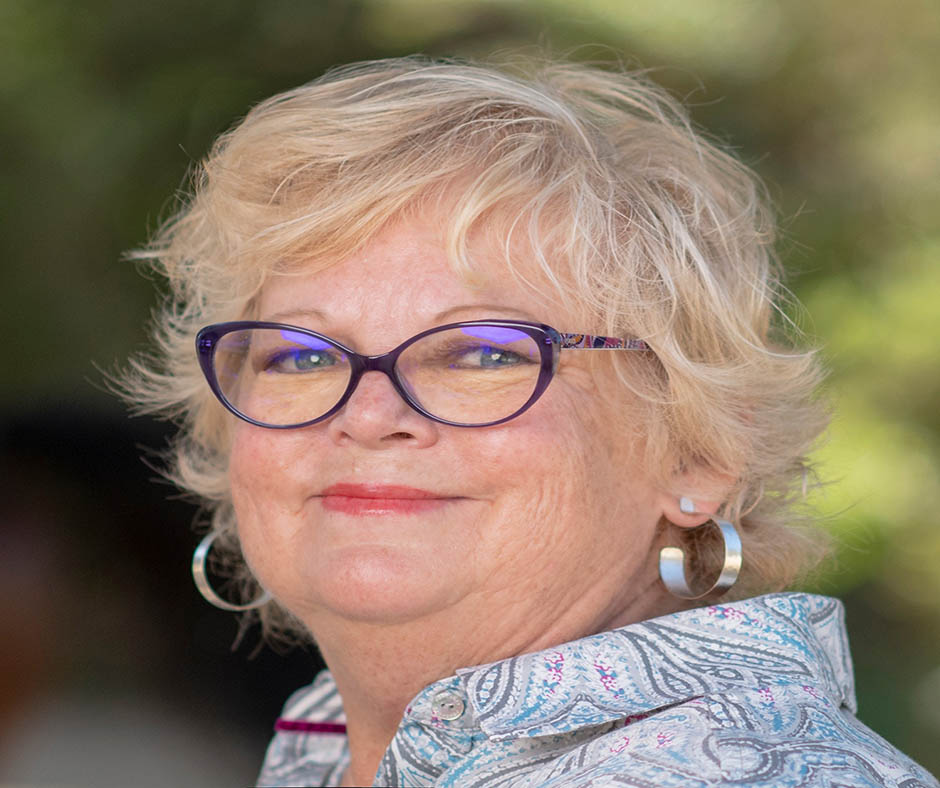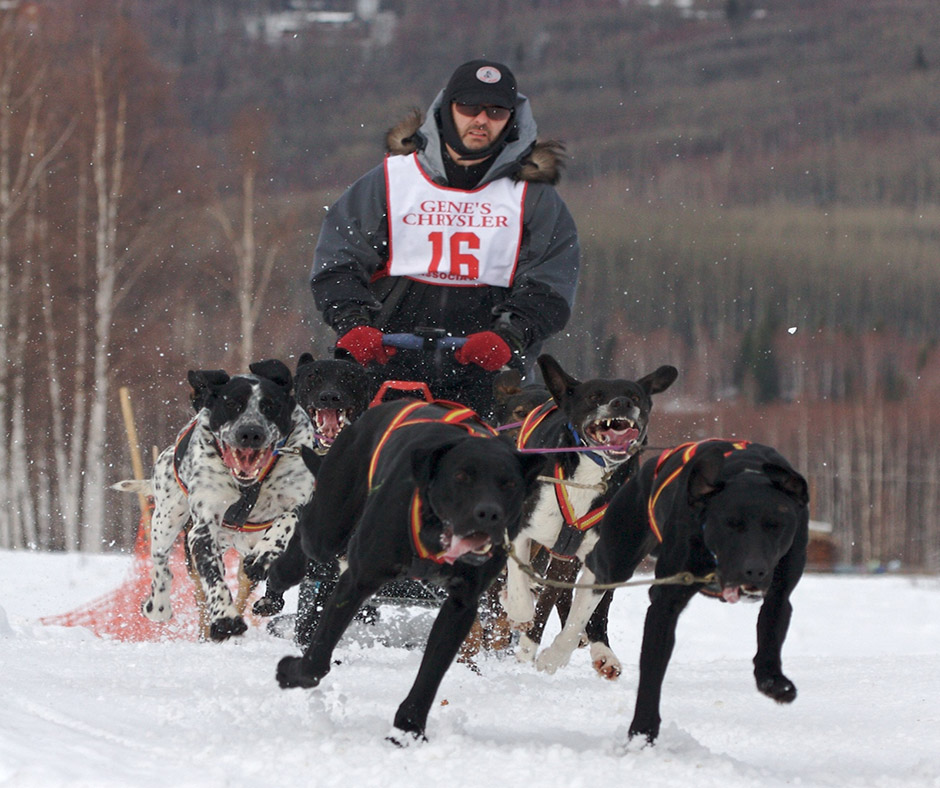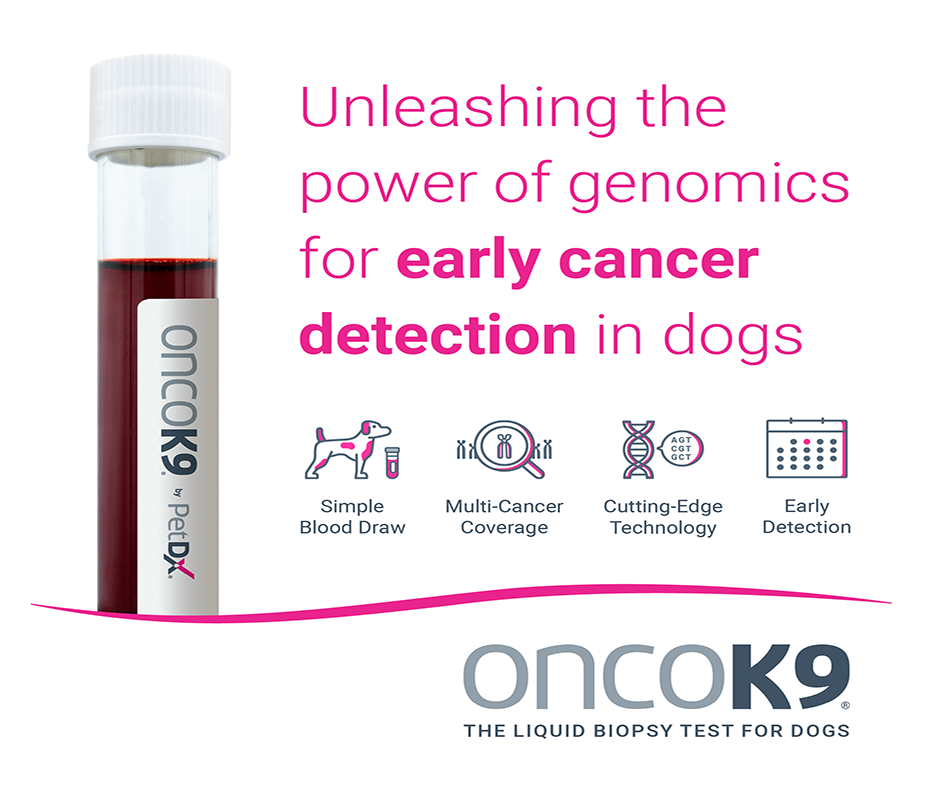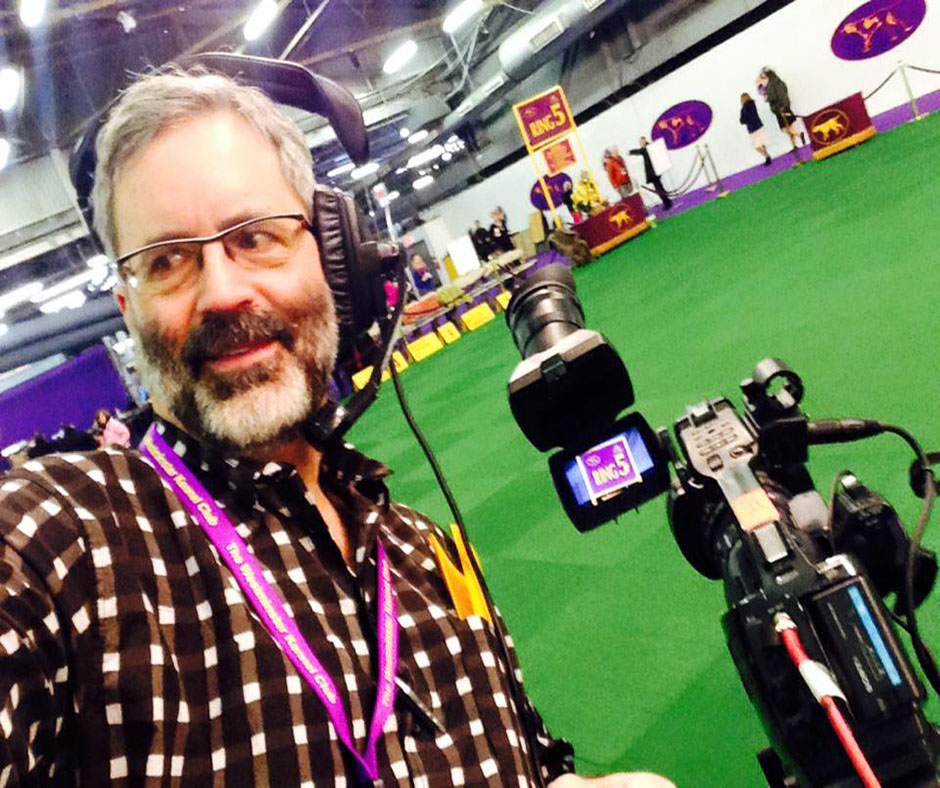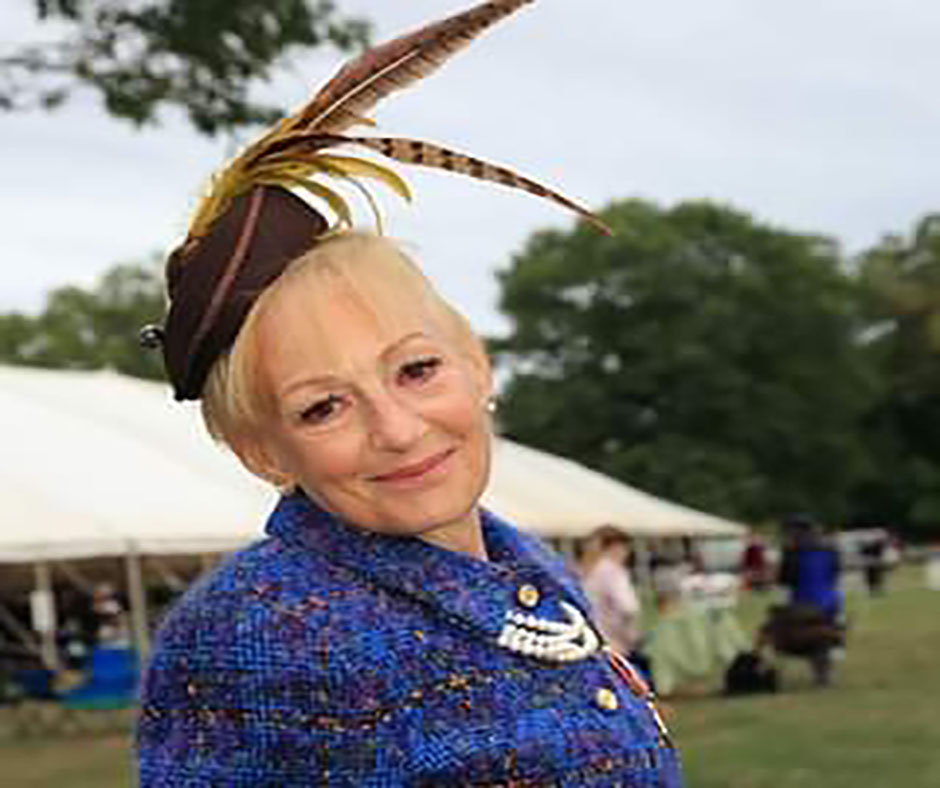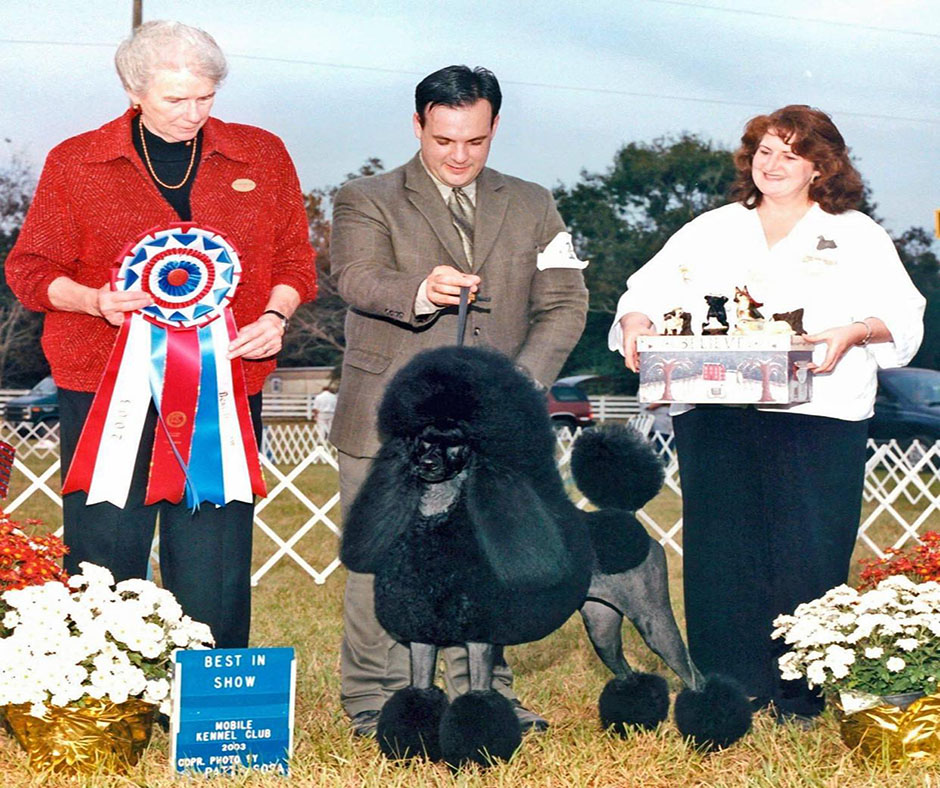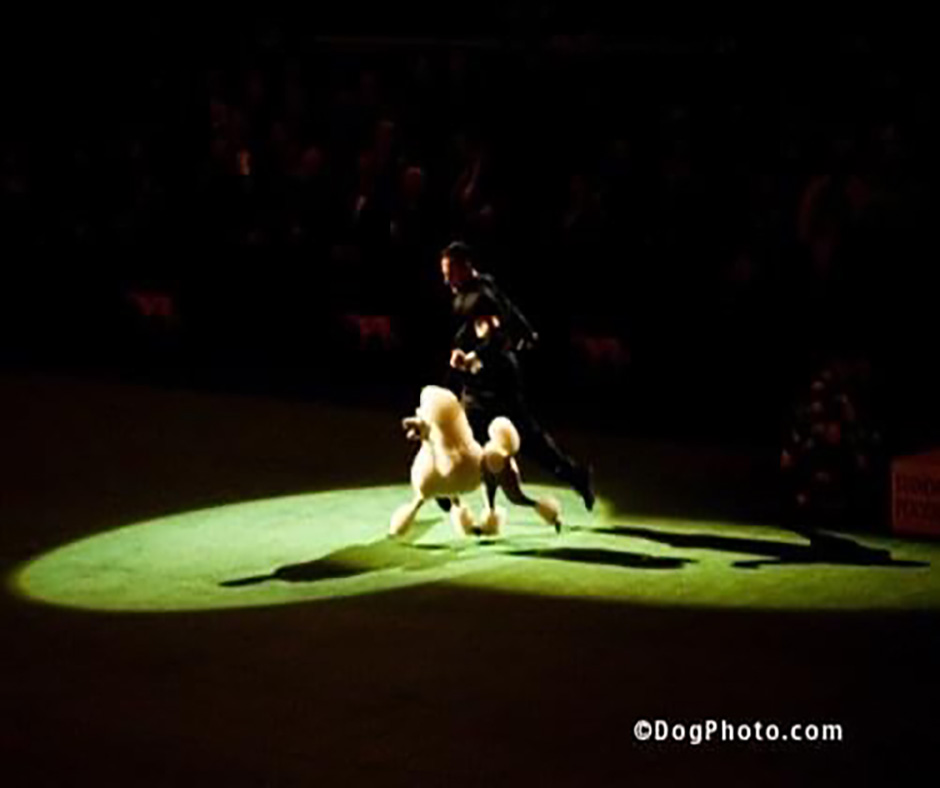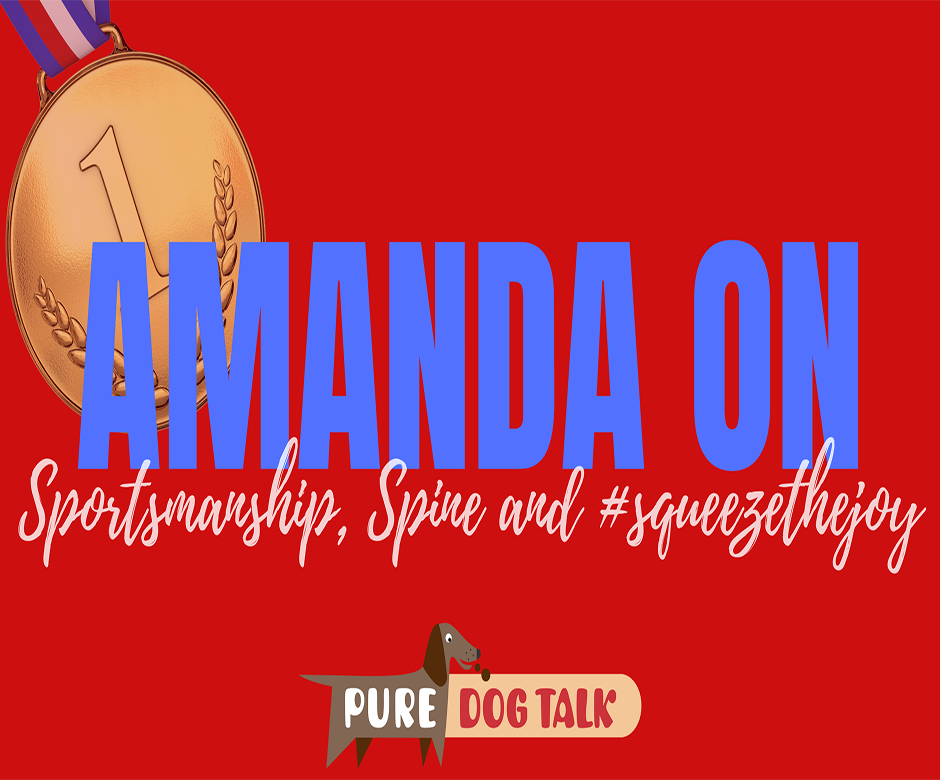Posts by Laura Reeves
537 – Win Photo Do’s, Don’ts and Disasters with Vicki Holloway
Win Photo Do’s, Don’ts and Disasters with Vicki Holloway
Host Laura Reeves is joined by Vicki Holloway, dog show photographer and poodle breeder, talking about how to get the best win photo with your dog and the importance of win photos for the show giving clubs.
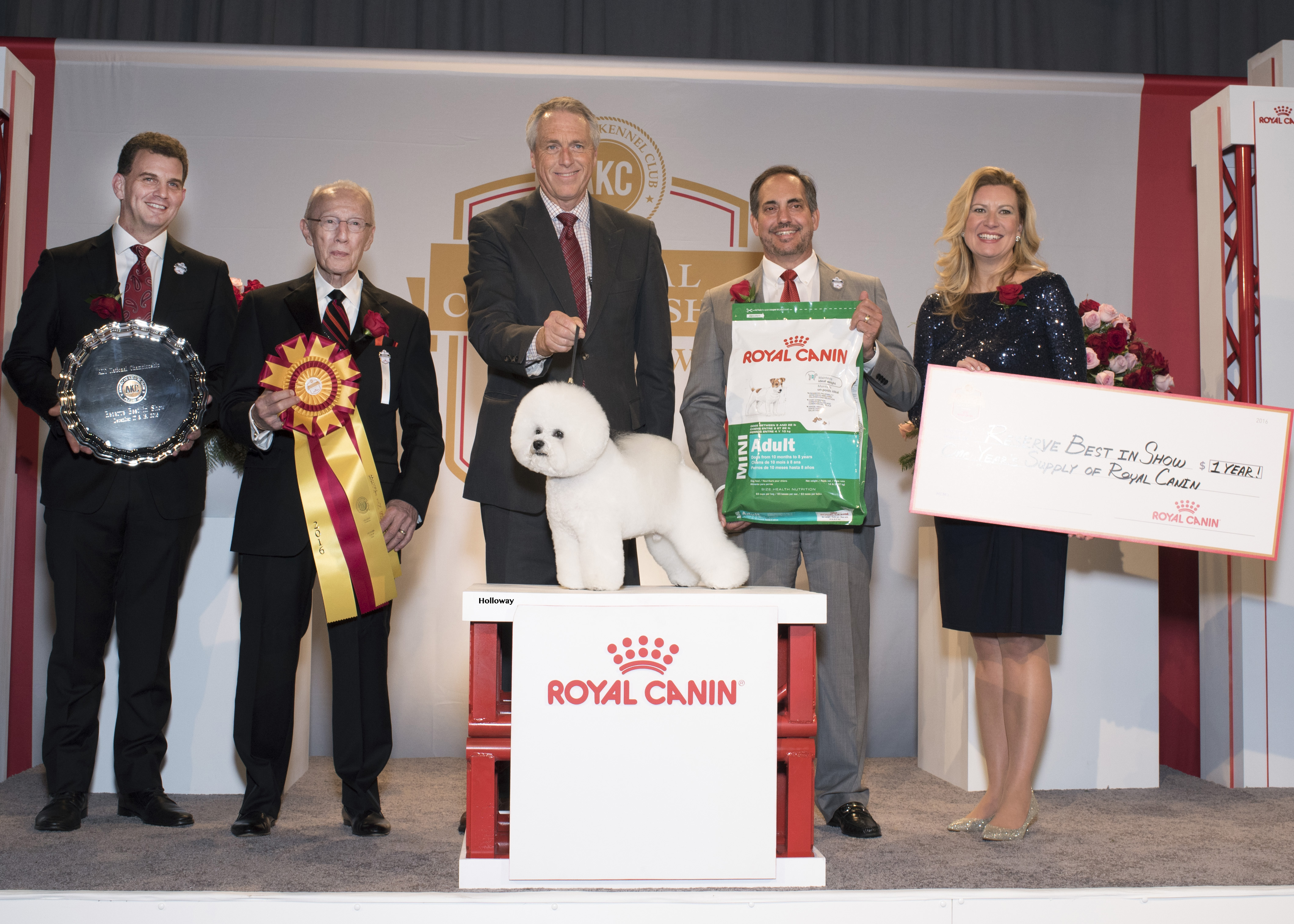 Vicki’s Tips for Exhibitors
Vicki’s Tips for Exhibitors
- Make sure your dog is cooled off. If it needs some water, give it a drink. Just take a minute to chill and kind of relax. You’ve won a prize with that dog and that dog knows it. There’s a lot of energy going on in the air.
- If it feels like it’s going to be really crunched to have that judge available right then, wait. Come back when they have their break and then bring a fresh dog.
- Relax! Just being in a really positive place … goes down the lead.
- Dogs are kind of like a four-year-old child. They’re not gonna stand there forever. They will do as best they can for the most part what you’re trying to get them to do, but just relax.
- If you’re ready and prepared, it’s gonna really make for a better photograph for everybody.
- Don’t train them to start with food immediately. First it throws them off balance. The dog is leaning forward, you’re not gonna get the front set up properly. As soon as you take that food away, they move. It’s just a given.
- Make it pleasant and acknowledge your dog. Make a fuss (over your dog). I think is really important make him love it.
- When you have your new puppy, even if you don’t win, even if you’re not entered, stop by the photographer stand. Put him up on the stand, give him a cookie. Have the photographer flash around, now they’re getting cookies and then they get off the stand. Even if they didn’t do everything perfectly, they still should get an “attaboy.”
- Make sure you straighten your jacket, fix your face, gather your leash. “I can’t believe how much time I’ve spent getting slobber stains off of a black skirt. People think ‘oh they’re photoshopping the dog’ … no, we’re taking spit off your jacket.”
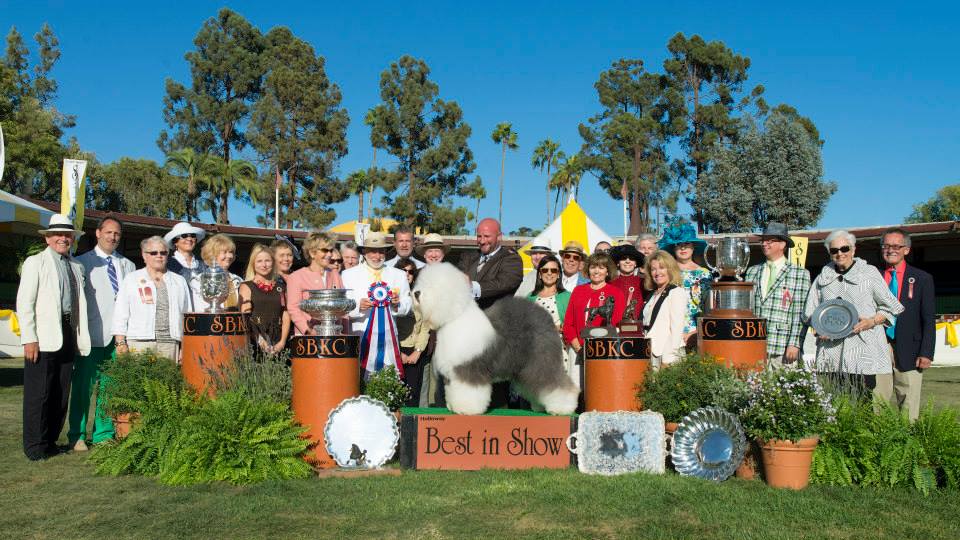 Vicki’s Tips for Clubs
Vicki’s Tips for Clubs
- Make sure the show photography area is large enough to work in, close enough to the rings for judges to reach easily but enough out of the way that flying toys don’t land on exhibitors.
- Check in with your show photographer no less than six months in advance and preferably much more. Especially with the shuffling of show dates and locations due to covid.
- “The show photographer is advertising (the club’s) dog show with every photograph we take. Our sign is in every photo and it says (the name of the club), where it was, this was the date… The win photos will be there forever (as the) historical record (of the show).”
536 – Canine Chiropractic and Measurable Results
Canine Chiropractic and Measurable Results
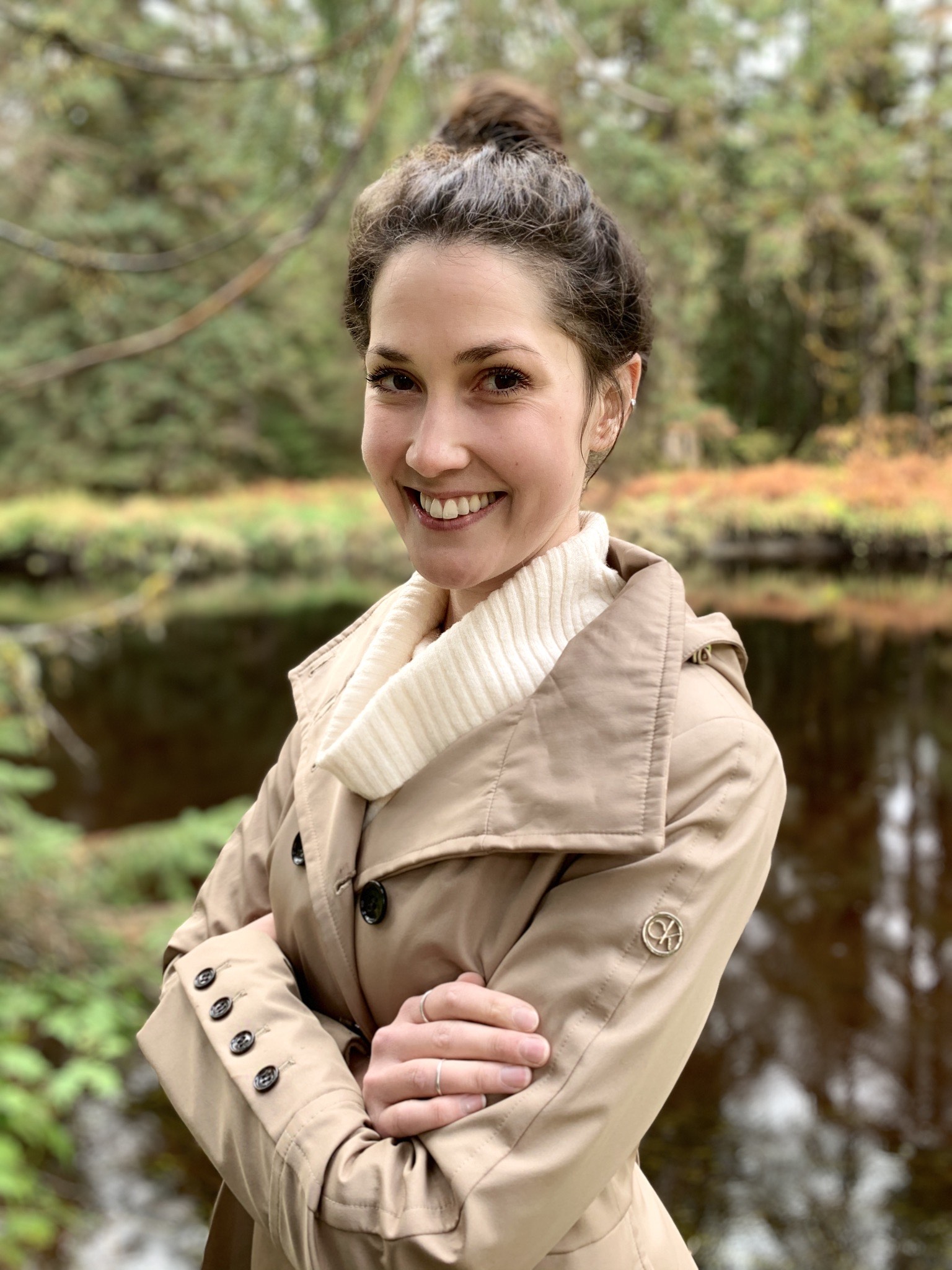 Dr. Clara Medalen joins host Laura Reeves to talk about gait analysis and chiropractic treatment of our dogs. She addresses what we can and can’t objectively measure in our animals after chiropractic treatment.
Dr. Clara Medalen joins host Laura Reeves to talk about gait analysis and chiropractic treatment of our dogs. She addresses what we can and can’t objectively measure in our animals after chiropractic treatment.
“In human chiropractic, we have a lot of objective measures we can use,” Medalen nited. “We can use X rays, we can use temperature scans, stuff like that. None of those work very well in dog chiropractic.
“What I wanted to find was an objective measure that people could take something home with them. (That) we could really watch (the pet’s) progress through care. (That) we had exact numbers for people, rather than just going on my word alone. I want people to feel empowered in their own dogs care.
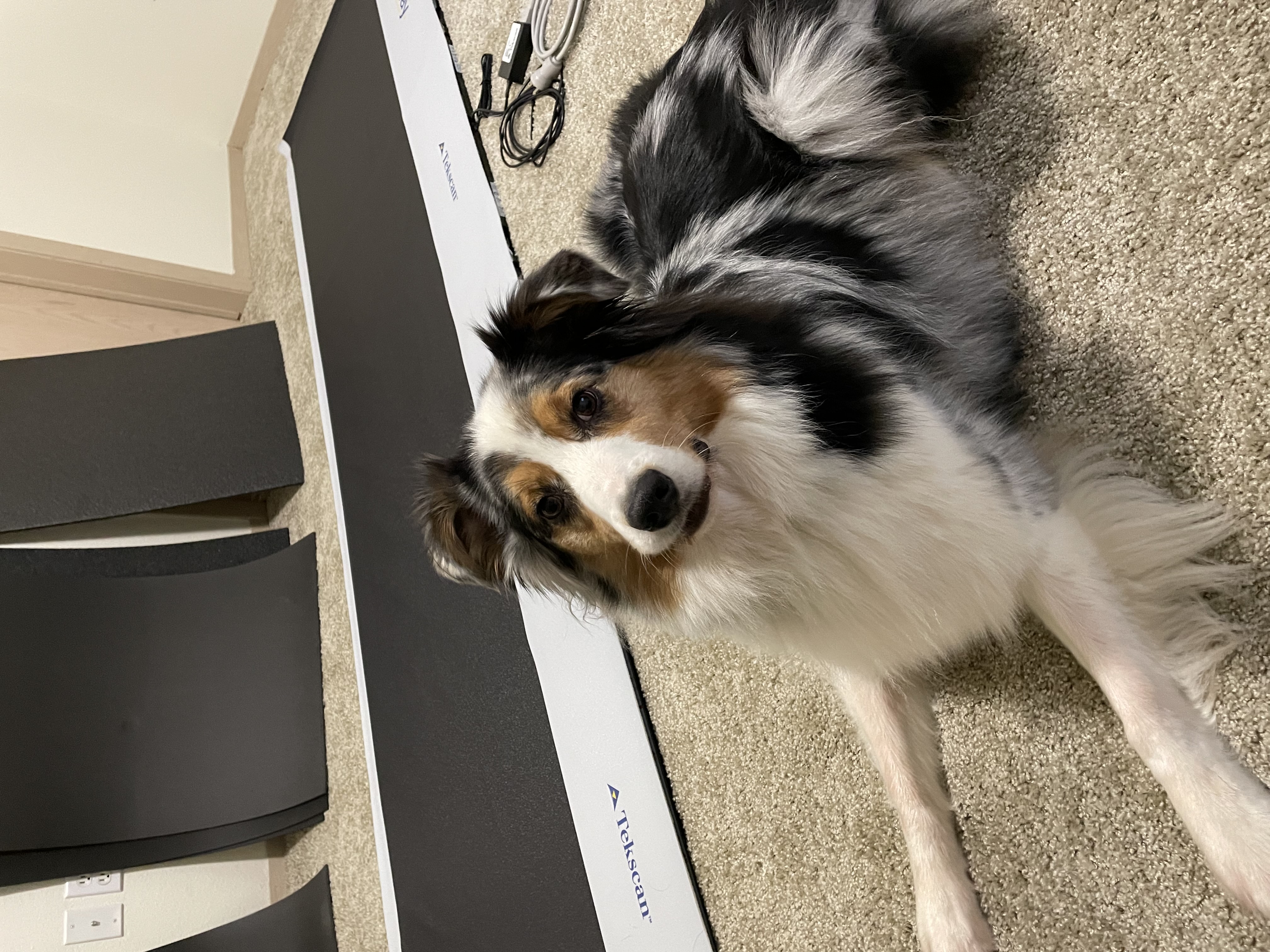 “Gait analysis is a big part of animal chiropractic. It’s normally a visual thing. Some people take videos, which is great. But I wanted real, hard data. So I found a gait analysis system that worked really well. I use Tekscan because they have more pressure sensors per square centimeter than a lot of the other options out there. They also provide a nice print out for people, so it gives the average of every foot step and the pressure on each paw; it gives exactly how much time they’re spending standing on each foot; how long they’re swinging through; how far they’re swinging through; the acceleration; tons of information.”
“Gait analysis is a big part of animal chiropractic. It’s normally a visual thing. Some people take videos, which is great. But I wanted real, hard data. So I found a gait analysis system that worked really well. I use Tekscan because they have more pressure sensors per square centimeter than a lot of the other options out there. They also provide a nice print out for people, so it gives the average of every foot step and the pressure on each paw; it gives exactly how much time they’re spending standing on each foot; how long they’re swinging through; how far they’re swinging through; the acceleration; tons of information.”
If people are interested in having Dr. Medalen or another Chiropractor treat their dog, they may need a referral from their veterinarian. Each state is a little bit different.
 “In Oregon, we have the vet referral. Which is fabulous because I’ve had some great conversations with vets. It’s a really good way to learn about each others’ professions. I am not treating any disease process. I am just simply fixing misalignments and helping to regulate the nervous system.”
“In Oregon, we have the vet referral. Which is fabulous because I’ve had some great conversations with vets. It’s a really good way to learn about each others’ professions. I am not treating any disease process. I am just simply fixing misalignments and helping to regulate the nervous system.”
For more information about animal chiropractic:
American Veterinary Chiropractic Association www.animalchiropractic.org
International Veterinary Chiropractic Association https://ivca.de
535 – Feeding Performance Dogs is All About Balance
Feeding Performance Dogs is All About Balance
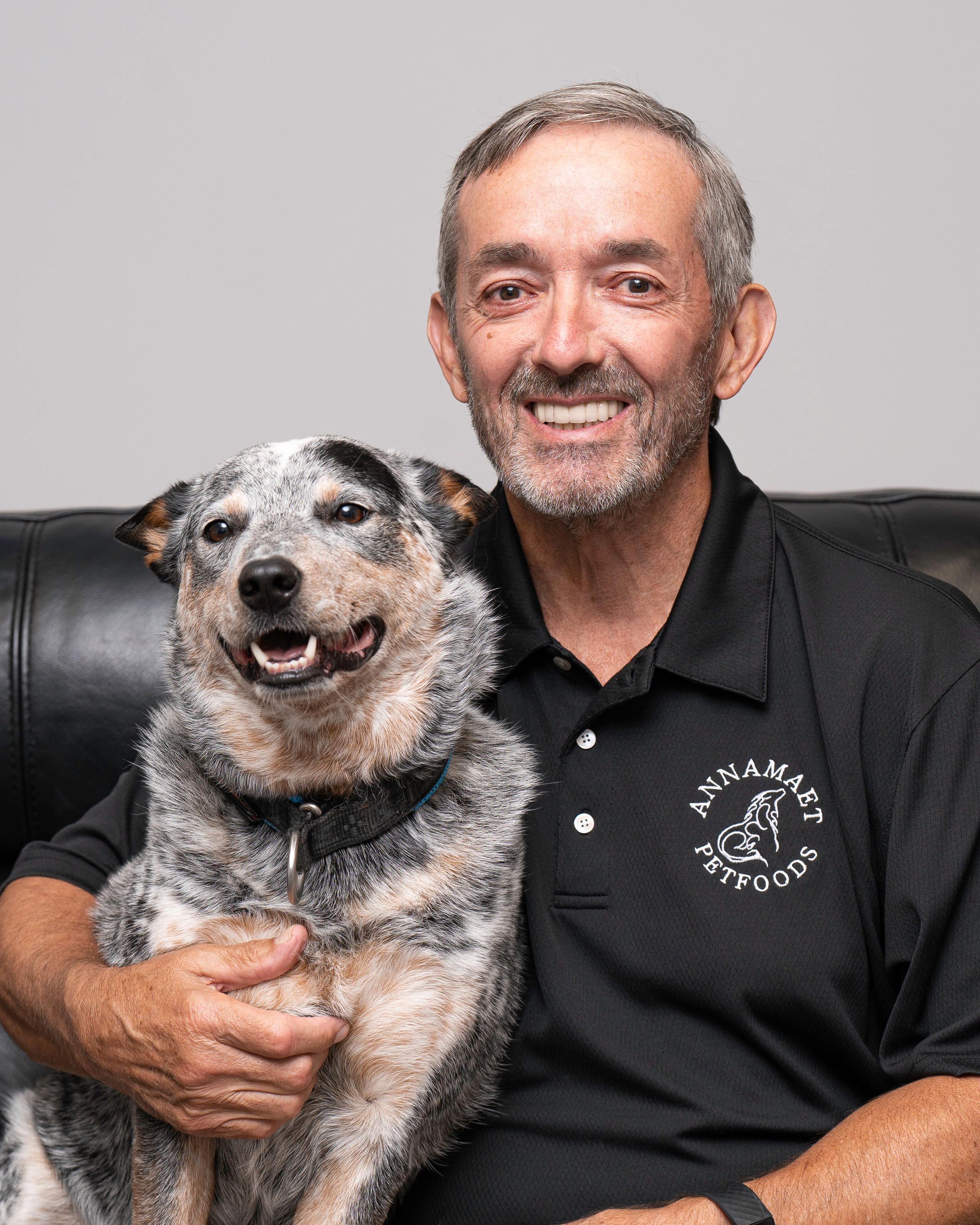 Host Laura Reeves is joined by Rob Downey, CEO of Annamaet, a companion animal nutritionist who conducted seminal research at the University of Pennsylvania on feeding performance dogs.
Host Laura Reeves is joined by Rob Downey, CEO of Annamaet, a companion animal nutritionist who conducted seminal research at the University of Pennsylvania on feeding performance dogs.
“Back in those days,” Downey said, “the idea was that you carbohydrate load (dogs) just like you do humans. We realized that that wasn’t the way to go with dogs. So, we did a study where we could actually increase stamina by 30% in running dogs by altering (the balance of) proteins, fats and carbohydrates. That has become the seminal study. It’s still cited in the NRC nutrient requirements of dogs and cats.
“We found the positive correlation between how much fat was in the diet and how far the dog could run. We found a negative correlation, a slight, very slight, negative correlation between the amount of carbohydrates and how far they could run.
“The bottom line is that any kind of long-term exercise, you’re initially burning stored carbohydrates called glycogen. That really helps you burst out of the gate or run up the hill. But once you start to use that, then these dogs, over time, become fat metabolizers. Eighty percent of the energy these dogs are using when they’re running field trials or sled dog races or more long term, they are burning fat.
“It’s an oxidative process. So, it needs oxygen. So, you need red blood cells to carry the oxygen (to the tissues) to burn the fat. That’s where the protein comes in. So, you need increased fat, you need increased protein, but you do need a minimal amount of carbohydrates to help with stool quality and “feedability.”
“You (also) need that glycogen replenishment. So that if you’re starting on day two in a trial, if you don’t have muscle glycogen stored in the body, what happens is that the dogs really don’t have any zip. They’re pretty sour or they just they don’t bounce back.
Dogs Don’t Require Ingredients, They Require Nutrients
“There’s a whole other group of studies we did on a supplement we make that actually replenishes muscle glycogen. Mother Nature is gonna replenish muscle glycogen over time but if you’re doing back to back events, you need something to replenish some muscle glycogen. So if I’m gonna work my dog today, if I use this glycogen replacement immediately post exercise, tomorrow he’s gonna have 99% of the muscle glycogen restored in the body. If I don’t use anything he’s probably only going to have 50%.
“You need the balance and you can balance out whether you’re doing kibble, raw, freeze dried or whatever. We’re talking about calories and protein, fats, carbohydrates … we haven’t even started talking about vitamins and minerals.
“There was an interesting study where they followed 2,000 beagles for about 15 years. The only thing they varied in the formulas was the vitamin levels. They had low, medium, high, and extra high. The dogs on extra-high vitamins live 23% longer than the dogs on average vitamin levels.
“They had 29% fewer veterinary visits on extra high vitamins than they did average vitamins and they were 32% less likely to have tumors. The sad part is when they went back and they examined the diets on the market, they found less than 5% of the diets had extra high vitamins.”
Tune in to hear the rest of this fascinating interview and learn from an expert on what and how to feed your dog.
534 — Changing the Conversation on Cancer Diagnosis in Dogs
Changing the Conversation on Cancer Diagnosis in Dogs
Dr. Angelo Marco, DVM and Dr. Andi Flory, DVM join host Laura Reeves for an exciting conversation about advances in early cancer detection. PetDx’s OncoK9 test is able to “identify a biomarker of cancer that comes from cancer cells” from a simple blood draw, according to Dr. Flory.
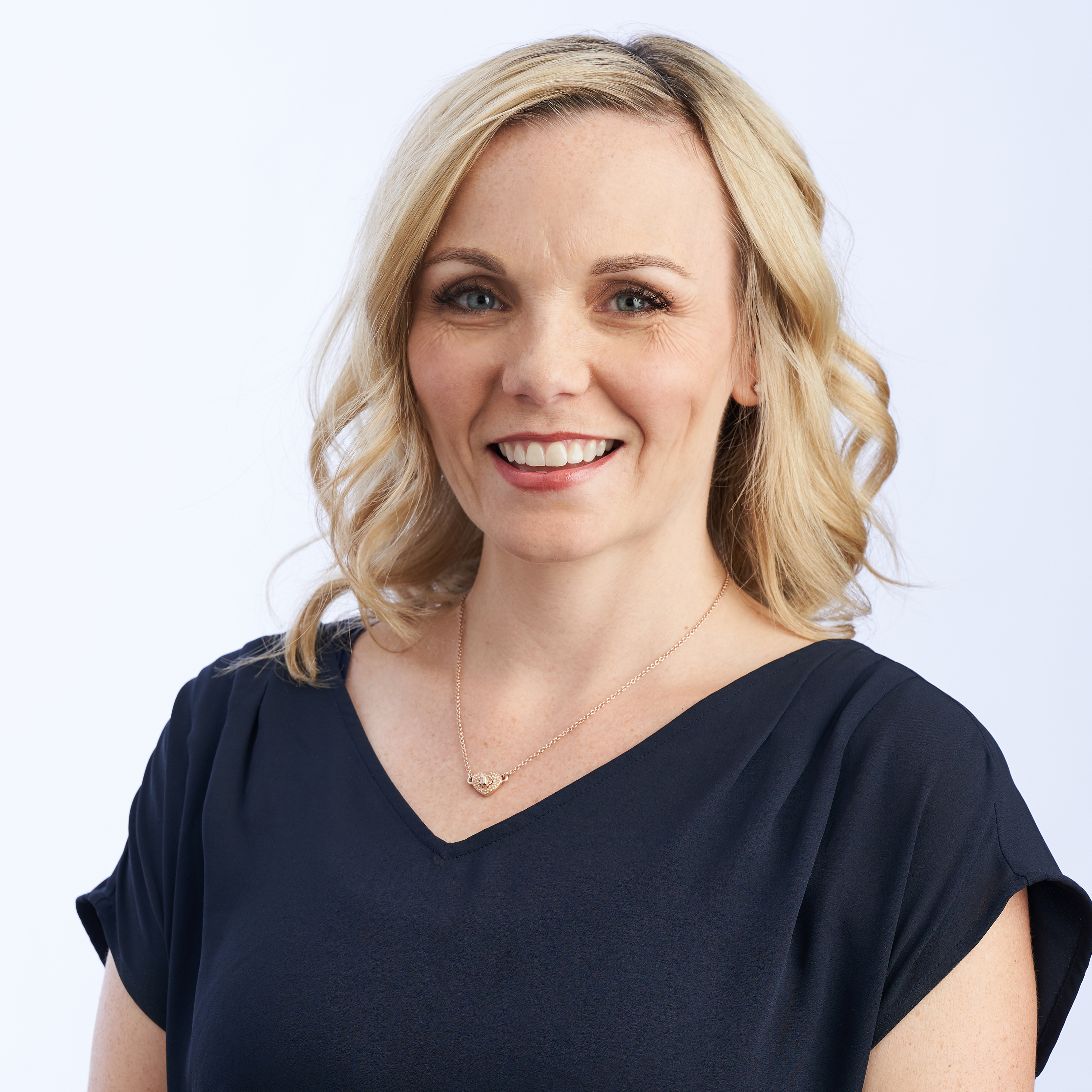
Dr. Andi Flory, DVM, Chief Medical Officer at PetDX.
Flory, Chief Medical Officer at PetDx, said the OncoK9 test has the potential to revolutionize our ability to detect cancer in patients, potentially even before they start to show signs and symptoms.
While the blood test identifies a variety of cancers, it is most successful at finding the “big three:” Lymphoma, hemangiosarcoma and osteosarcoma.
“Those big three,” Flory said, “that detection rate is really high. It’s 85% and those are the most aggressive cancers that we see in dogs. So the fact that we have the potential to identify those really aggressive cancers sooner, it’s just amazing.
“The way that would kind of work, is if you think about dogs that are at high risk of cancer because of they’re getting older, for example, we know that the risk of cancer increases with age. Or because of their breed. You’re certainly aware there are some breeds that just get a lot of cancer, unfortunately. If we think about testing those individuals as a screening test, like as an annual test before they’re showing any clinical signs you know while they’re still healthy. If we can identify cancer while they’re still feeling good, then we may have a better chance of controlling it longer term.
“I think about the cases that we get almost universally when we discover hemangiosarcoma. It’s because the tumor is bleeding or it’s already spread and the metastatic lesions are bleeding and that often results in a middle of the night visit to the emergency room. It’s a snap decision. Maybe your dog looked normal that morning and then all of a sudden you’re in the ER being told your dog has a tumor on the spleen and it’s bleeding and we need to do emergency surgery and we need to do a blood transfusion and there’s really only one decision that you can make right now. It’s shocking. It’s traumatic. It’s painful for the dog. It’s all of those things and it happens so unexpectedly and it’s so emotional.”

Dr. Angelo Marco, DVM and his Border Terrier at Palm Springs Kennel Club.
“The important thing to know,” Marco said, “is that when we see a cancer signal on this test, it’s an indication of malignant tumor cells in the body right now. It’s not something that they were cured of five years ago and it’s not a predisposition test, so it’s not something that is predicting, it is something that is there in the body right now. So that really highlights the importance of going forward on that “cancer hunt” to find where is this cancer signal is coming from.”
Be sure to listen to today’s episode in full and visit PetDx for additional information.
533 – Meet Dr. Darin Collins, Saluki breeder, new CHF CEO
Meet Dr. Darin Collins, Saluki breeder, new CHF CEO
Dr. Darin Collins, DVM, joins host Laura Reeves to discuss his new role as Chief Executive Officer at the Canine Health Foundation. Collins, a longtime Saluki breeder, came to CHF in October, leaving his role as the Director of Animal Health Programs at Woodland Park Zoo in Seattle.
Collins’ trajectory in the world of purebred dogs started as a boy in Central Illinois with hunting dogs, specifically a Brittany.
“It wasn’t really until after vet school that I got a Saluki,” Collins said. “I got a Saluki that nobody else wanted, that had recovered from a broken leg. That was my experimental Saluki. I made him live with me in an apartment in Chicago. And then I moved him to Seattle in 1991, when I took the position at the Zoo.”
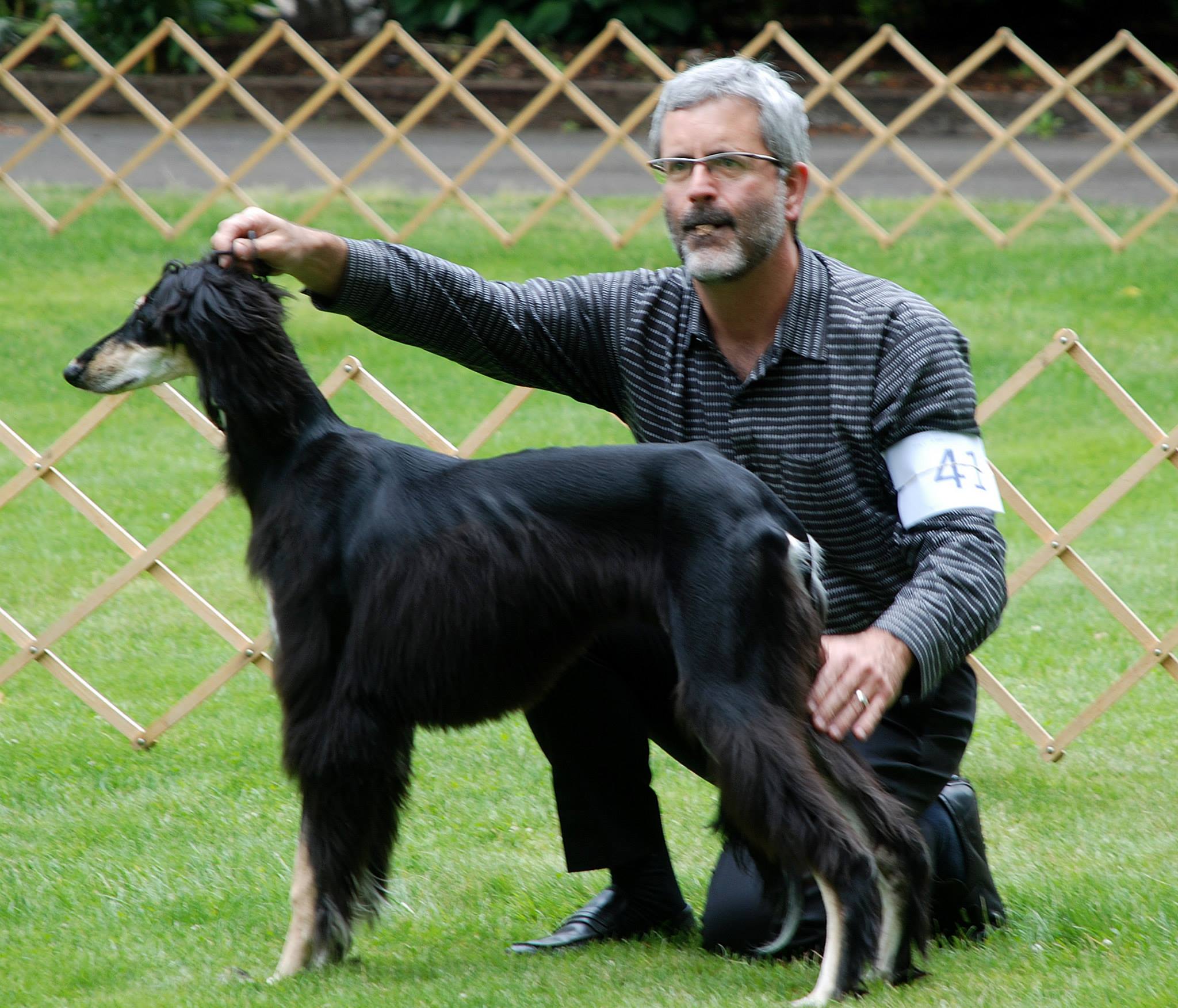 In Seattle, Collins contacted George and Sally Bell, of the famed Bel S’mbran Salukis. That encounter began a lifetime friendship with a direct through line to his new role at CHF.
In Seattle, Collins contacted George and Sally Bell, of the famed Bel S’mbran Salukis. That encounter began a lifetime friendship with a direct through line to his new role at CHF.
“When Dave Frei and George strategized how to film the breeds during the day at the Garden, I was one of the camera people selected. I had that for about 15 years, until which time the contract ended and I was no longer a camera person. But at that point the habit of going to New York in February had already been established.
“I met people (during that time) and one of those individuals was influential in helping (my name) actually surface when the search came out for a CEO for the Canine Health Foundation.
“I went from working with 300 taxonomic groups and over 1000 individuals of 600 species, to working with one species. Looking at all the divergence within the dog world, I find that very, very compelling. I love canine health and I’m very well suited to be in the position that I’m at right now.
“I’ve only been here six months so I’m still learning the in’s and outs of the organization and the job, but it’s a phenomenal organization. I work with phenomenal people. We’re all devoted to dogs and dog health and understanding disease and treatments and cures and diagnostics. It’s phenomenal vortex of opportunity.”
532 — Breeder, Buyer, Vet: Let’s TALK!
Breeder, Buyer, Vet: Let’s TALK!
Dr. Marty Greer, DVM, best-selling author, dog breeder and practicing veterinarian, is back with host Laura Reeves to talk about the delicate and critical communication protocols, best practices and successful strategies for Breeders, Puppy Buyers and the Buyers’ Veterinarian.
“This is a challenge,” Greer said. “How do you have that three-legged stool and make it all work?”
Reeves questions, “How do we set our puppy buyers up for success? Is their language that we can send home with that puppy buyer, that they can then take to their veterinarian to help bridge this three legged stool?”
“I think the first thing that really has to happen,” Greer said, “is before the puppy buyer gets their puppy, they need to research the veterinarian that they’re interested in using.
“Now they may already have a good relationship with the veterinarian that they trust, that they know is open to a certain protocol for vaccinations, delaying spaying and neutering, certain other medical management situations, but I think the first thing they really have to do is know who they’re seeing. If they have a great relationship and they’re already doing that, that’s great.
“If you find yourself in a situation where you have a veterinarian that you’re butting heads with, you’ve chosen the wrong clinic. You need to start doing some research and finding other alternatives. It may mean that you go as far as somebody that does integrative medicine, holistic medicine. You may have to kind of go to that level to get the kind of care that you need.
“But if that’s what it takes, in almost every community there are going to be veterinarians that are open minded, that are willing to work with you, that are willing to talk to breeders, that are willing to accept the fact that you wanna do some of these things somewhat differently. But you gotta know who they are. You have to do it before you get the puppy or before you have a crisis. ‘Cause in the middle of a crisis is not the time to figure this out.
“You may kiss a couple frogs before you get there, but it’s OK. Go in for something simple. Go in for something that isn’t complicated. Go for a heartworm test. If the vet clinic does nail trims, go for a nail trim. Just kind of get a feel for who they are, what they are, how they do things.
“You just really need to make good decisions. People come to us frequently, and this makes me and my doctors and my staff crazy, they come in and they say, ‘well, we come to you for the really important stuff, but we just go to the local place because it’s just shots.’ I’m like ‘no, no, no, no, no. They’re not just shots!’ First of all we don’t shoot dogs, we vaccinate them. But as Dr. Ron Schultz and Dr. Lori Larson will say, vaccines are one of the strongest medications you give your dog.
“Frankly, not every veterinarian has everybody’s best interest at heart. Sometimes it’s all about money. I hate to say that about any profession. But the reality is, you need to be very careful how you select your veterinarian, and how you work with them, because that will make or break your pets long term health. It is a hugely important situation that you work well with them. That you understand them.
“It goes back to relationship. It may mean that you buy a bottle of wine for your veterinarian or take a plate of cookies to the receptionist or you take pizza for the whole staff. It really does all come down to relationships. The better relationship you have, the better communication you have, the better chances are that your dog gets the kind of care that you’re looking for.”
531 – Elaine Lessig: “Fashionista” Passionate About Dog Judging
Elaine Lessig: “Fashionista” Passionate About Dog Judging
 Judge and self-proclaimed “fashionista” Elaine Lessig joins host Laura Reeves to share her passion for dogs and dog judging.
Judge and self-proclaimed “fashionista” Elaine Lessig joins host Laura Reeves to share her passion for dogs and dog judging.
Lessig started her purebred dog journey in the 1980s with Cavalier King Charles Spaniels before they were recognized by the AKC. Today she judges the toy, sporting and non-sporting groups.
“I love (judging),” Lessig said. “But I’m smart enough to know that I don’t want to judge everything. Every breed has its detail and I think coming from toy dogs was a distinct advantage. Every toy dog breed is a boutique item. I don’t look at sporting dogs as retrievers and pointers and spaniels, they’re each a unique breed and I think I bring that detail into it.
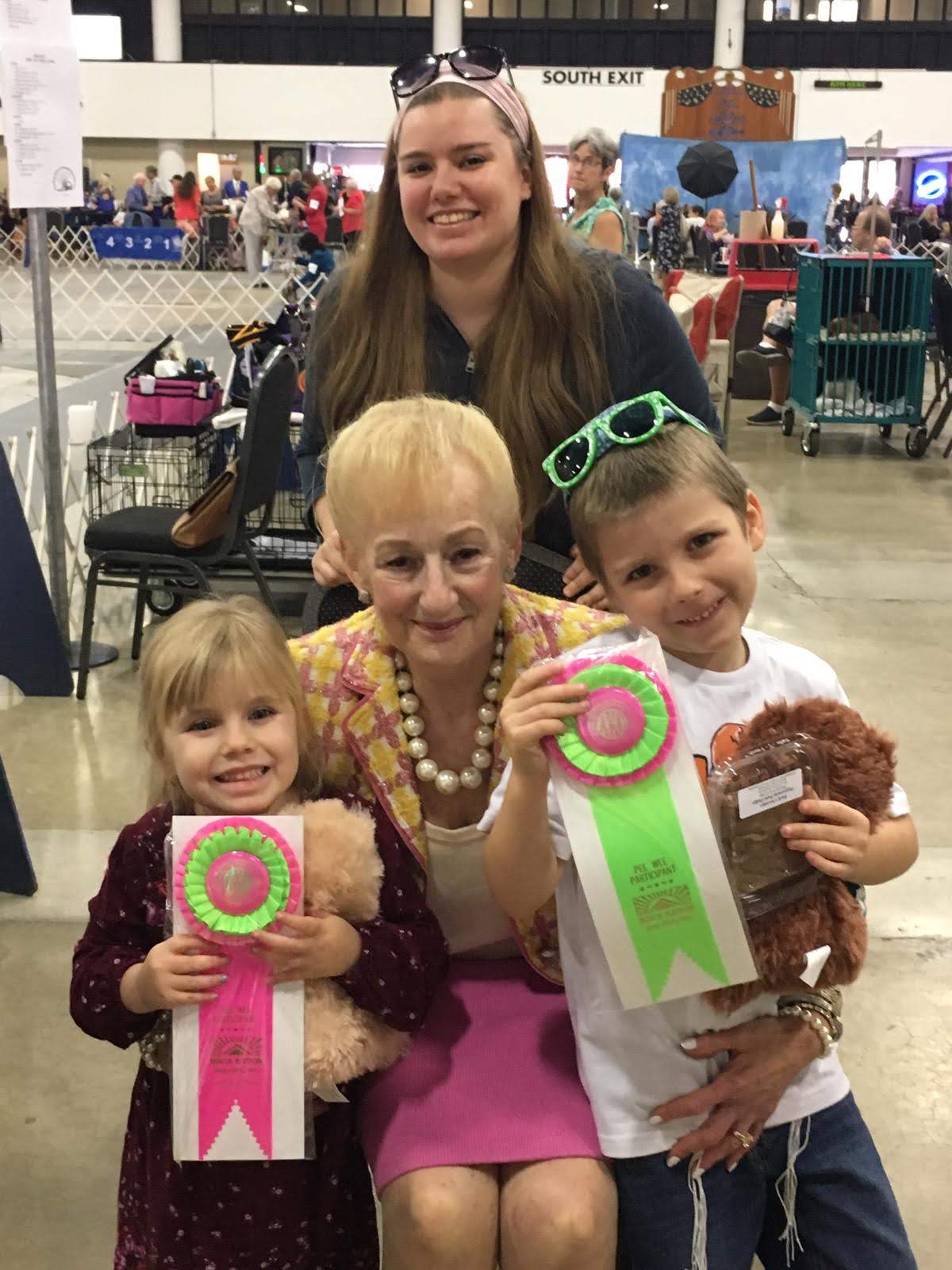 “I have no other reason to be here than I love what I do and it gives me so much pleasure. I am not a professional judge in terms of this is not my income. I don’t have to go out and judge. I’m very happy doing just my three groups. This is a passion. It isn’t a product.
“I have no other reason to be here than I love what I do and it gives me so much pleasure. I am not a professional judge in terms of this is not my income. I don’t have to go out and judge. I’m very happy doing just my three groups. This is a passion. It isn’t a product.
“I love to see the connection between whoever it is that’s handling the dog and the dog. I think the dog is better with somebody that they have that wonderful relationship with. I think they perform better. I’m looking for a show dog on those days and then I want to see a dog in good condition. Conditioning is everything here. I’m most offended if you bring me a dirty dog.
“You have to take your losses and you have to put your losses in the loss pile. When you have a chance, you can get them washed and cleaned up again, but you can’t dwell on those things because tomorrow is another day, said Scarlett O’Hara. I won’t get negative about this. I refuse to do it.”
Known for her fabulous wardrobe and keen sense of style, Lessig shares memories of Sandra Goose Allen, meeting David Fitzpatrick’s Pekingese Malachy the night he arrived in the US and celebrating after the team won the Garden in 2012.
Hear more from Lessig on health in the Cavalier King Charles Spaniels here.
530 – Poodles, Professional Handlers and Public Image
Poodles, Professional Handlers and Public Image
Christian Manelopoulos is back with host Laura Reeves for more Pure Dog Talk on Poodles, Professional Handlers and the sport’s Public Image.
“I think really great people are very generous with their time and advice,” Manelopoulos said. “In the end, the thing we all struggle with is having time to do things. And so when people are generous with that time, you really have to soak that in. But the really great people are willing to do that.
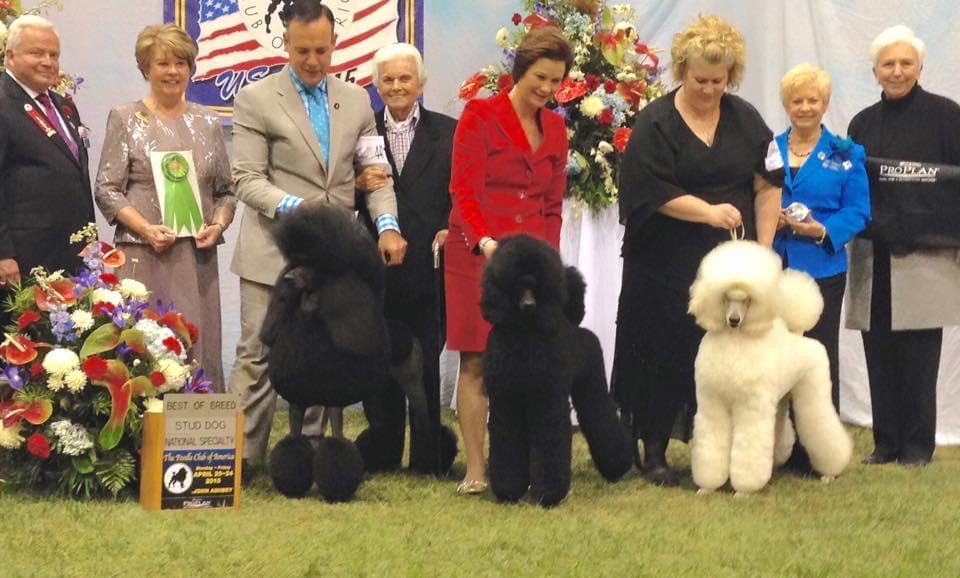
Winning the stud dog class at PCA.
“People think of handlers in one way and breeders another way and that they are two separate things. But they’re very dependent upon one another. I do think people don’t realize how much professional handlers actually influence breeds positively. We always get the negative….
“We’ve seen a rapid decline in big breeding kennels. There’s still a lot of people that breed but when you breed one litter a year or one litter every two years, it’s really not enough. As dog show people, we need to pay a little bit more attention to these kinds of things. We do need people to breed litters of dogs. There’s just not enough dogs out there for the people that want them, especially purebred dogs. But we need to market ourselves correctly and we need to promote the breeds, the dogs, in the correct way.
“I mean, we can’t be elitists. When people come to dog shows and you’re rude to people and you talk to them like they’re idiots, they’re not going to want to come back. We need to be encouraging to people about the dogs. We need to breed healthy dogs. People buy purebred dogs because they want dependability. It’s like what Apple is. You buy an iPhone because it works. You buy a purebred dog because you want to get a poodle that looks like a poodle, acts like a poodle, has a temperament and then is hopefully healthy.
“The first poodles that I bred, I have none of that bloodline in my lines today because of health reasons. So you can’t be afraid to start over. You have to eliminate dogs from your breeding programs and move on. That doesn’t mean you need to eliminate all of them. You have to be diligent in what you do and examine correctly ‘what I can work with, what I can’t work with.’
“We need to promote a positive image of the sport. We see people flying with their fake service dogs and they post videos on Facebook and people talk about how cute it is that you are committing a federal crime. I don’t think that that’s the right message we should send people. You could see why that would come off the wrong way to the general public. We need to self-examine.”
529 — Christian Manelopoulos: “I’m Going to America”
Christian Manelopoulos: “I’m Going to America”
Professional handler Christian Manelopoulos joins host Laura Reeves for part one of a wide-ranging conversation about professional handling, working as an apprentice, the toughest dogs to trim and the challenges of moving to America to begin his career.
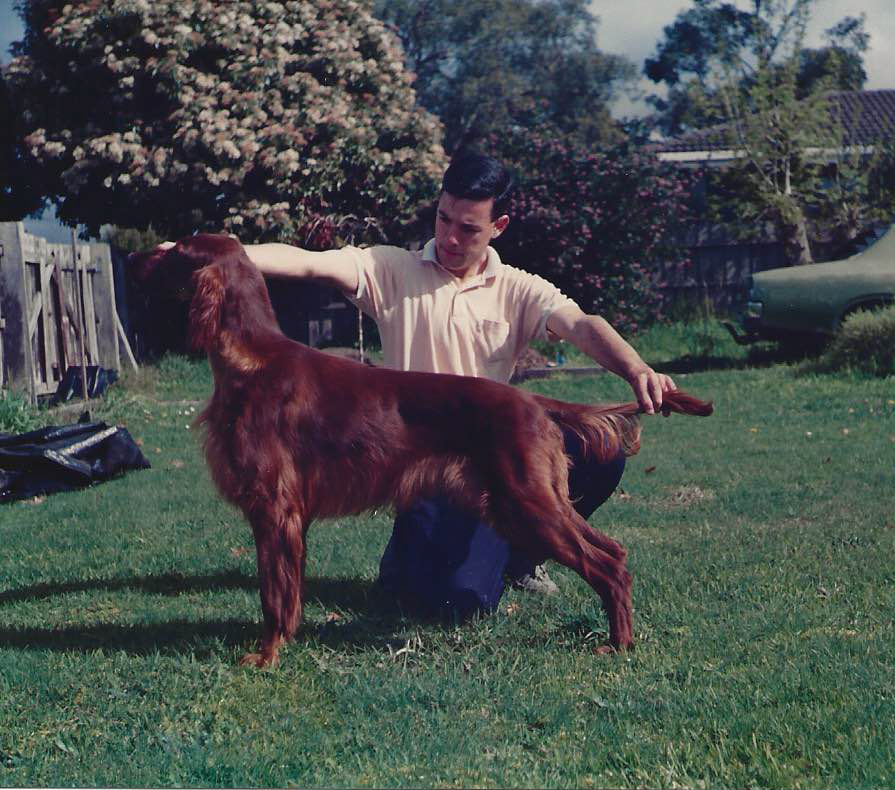
Christian with his first show dog, Taraglen Nicholas
Manelopoulos started in purebred dogs as a teenager in Australia after a knee injury ruined his cricket game. He eventually worked his way up to earning expense money showing dogs for the president of the Victorian Kennel Association.
But what he really wanted to do was move to the US and show dogs like the pictures he saw in Kennel Review of Frank Sabella’s poodles.
So, when he had a chance to work for Joe and Pauline Waterman in Southern California in the early 1990s, he jumped at the chance.
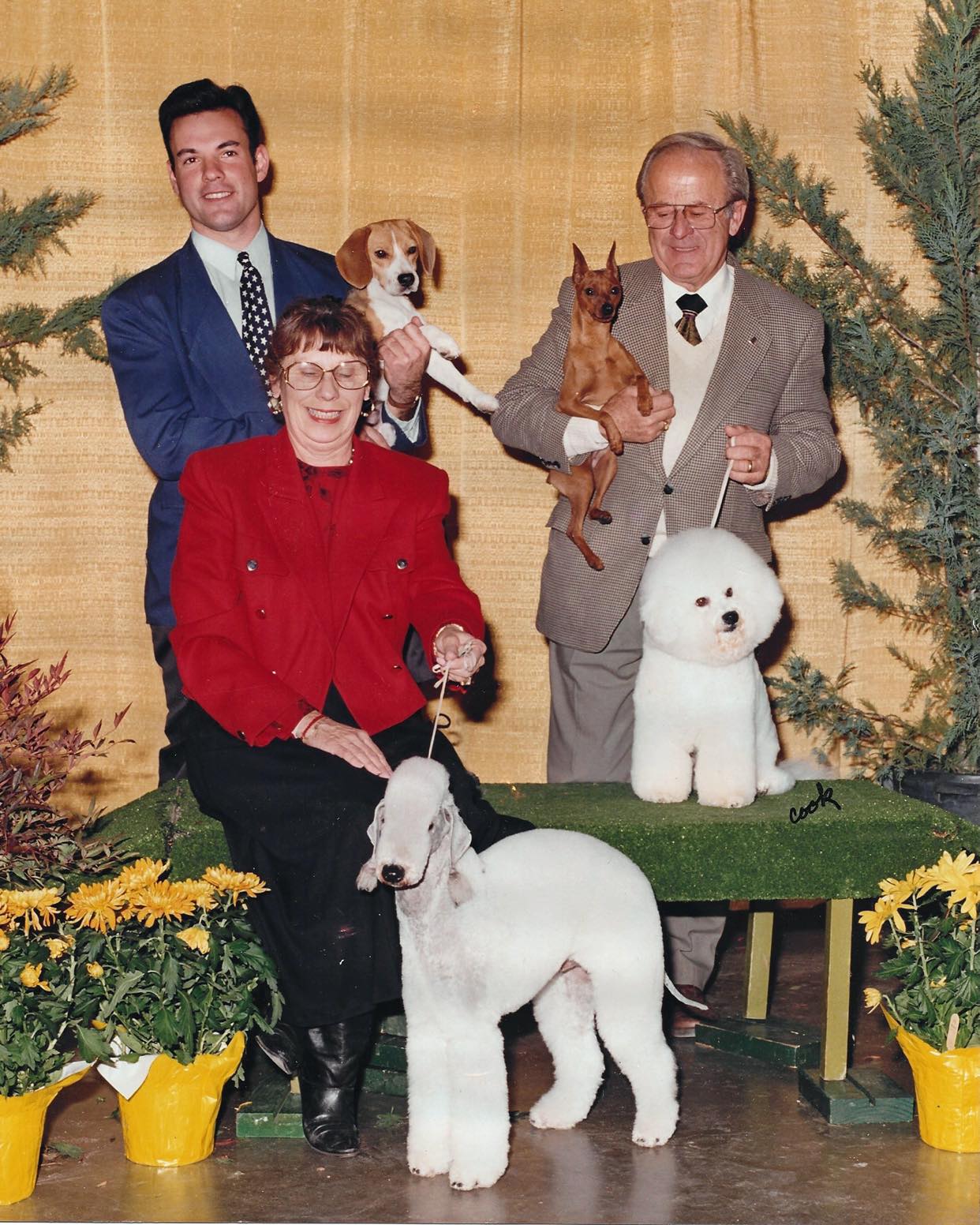
Christian in a team photo with Joe and Pauline Waterman during his apprenticeship.
“Going to Joe and Pauline was fantastic because being in Los Angeles, Dick Beauchamp and Frank Sabella would call the kennel. At that time (the Watermans) were still breeding Bichons a little bit. I would study the pedigrees of all the Bichons and all the dogs. I knew their pedigrees better than they did. I was so eager to learn at that time and so that was a tremendous experience.
“The dog show world in Los Angeles in the early ‘90s was a world of its own in that sense. Corky (Vroom) was like the king and then Bruce and Gretchen (Schultz), and then Joe, so it was a tremendous learning experience.
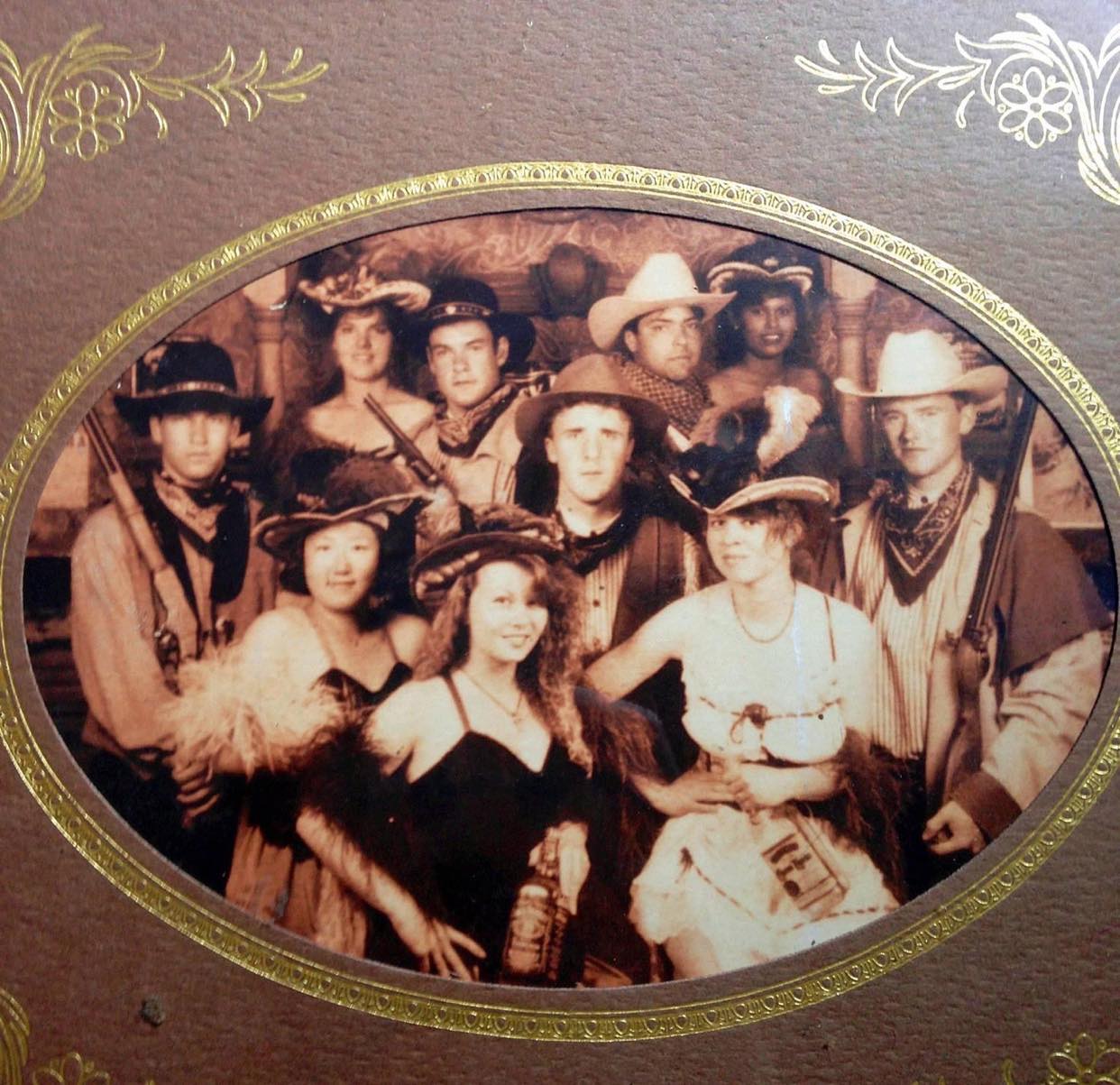
With other assistants in Los Angeles, Jason Hoke, Tracy Szaras, Andrew Peel, Doug Carlson, Jr Alacantara, Amy Thurow.
“I tell people it was different also because we didn’t have as many dog shows. Most of the shows were only Saturday and Sunday shows. So, all of the assistants, Woody’s assistants and Bruce and Gretchen’s and Corky’s, we would often get together on Tuesdays and go and do things. So it was a very communal thing.
“Pauline, Sue (Vroom), Gretchen and Bergit Coady, they were very motherly influences on a lot of the (dog show) kids in the LA area. Especially someone like me, I came from another country, my family was thousands of miles away, so in many ways these women replaced my parents for me. I’m very appreciative to all of them. Sadly most of them have passed away now, but it was definitely a different time.
“I groomed all the time. I mean, that’s the story of my life for 30 years. I tell people that I started working 15 hours a day and here I am 30 years later, I still work 15 hours a day. Everyday. It hasn’t changed.
“You’re very much an entrepreneur in this business. You’re self-employed, so the businesses is you. When you start out, you go out from being an assistant, you go out to become a handler, you’re literally saying ‘for the next 15 years of my life I am gonna work every waking minute of every day. I am going to forego going to people’s birthday parties and weddings and things like funerals and baby showers. I will regret many of those things.’
“But those are the compromises you make to be really successful. Now people can say ‘well, I want a work life balance.’ Those people either generally come from wealthy families or they’re not that successful. The most successful people, time and time again, that is their story. If you think it’s going to be different, then you should probably try something else, ’cause it’s not.
“You have to run it as a business. A lot of kids, they think ‘oh, I wanna get a big winning dog and then they travel around (in) a big truck, with a big mortgage for that truck, and make no money. They do some winning and then it’s all over. The most common issue dog handlers run into is tax issues. You’re self-employed, you don’t save enough money for taxes and things like that. Probably lesson number one I tell everybody get a great accountant.”
528 – Amanda Kelly on Sportsmanship, Spine and #squeezethejoy
Amanda Kelly on Sportsmanship, Spine and #squeezethejoy
Amanda Kelly, Fwaggle Toy Manchester Terriers, joins host Laura Reeves for part two of their wide-ranging conversation discussing subjective sports that was sparked by this year’s Winter Olympics. Today’s topics touch on sportsmanship, “spine,” mentorship and Amanda’s new hashtag, squeeze the joy, about tasting every last drop of joy the sport brings its competitors.
Sportsmanship
“We see the Olympic spirit in many stories every time there’s Olympic Games,” Kelly said. “This year the one that really stood out to me was (a skier) from Finland who won the gold in cross country skiing. (Then) he waited for the last place skier to cross the line before he would celebrate his gold. Because he had respect for the fact that every person in that race, no matter where they finished, had worked really hard to get there. I think that maybe we need a little bit more Olympic spirit in our sport.
Spine = Courage
“This type of subjective sport tends to draw people who are looking outside of themselves for reassurance and validation. Dog shows are an ego sport. We do it on some level for some sort of return in that area of our lives. Thinking about what that is and being able to overcome the challenges that come with whatever reason we’re doing it for. I think that’s a self-awareness piece.
“(That self-awareness gives you) the spine to be able to stand your ground and say ‘it doesn’t matter to me if it’s unpopular. It doesn’t matter to me if all of the cool kids are doing it and I don’t want to. I’m gonna do what I wanna do the way I wanna do it based on my own opinion and my own values.’
Perspective
“I really think that in the dog world we have to be cognizant of context for the importance of our sport and the people in it. There’s a lot of stuff going on in the world right now and there’s a lot of stuff that’s going on in the world right now that is a a lot more important than who wins at the dog show. A little perspective is number one. Number two, do not ever drink your own koolaid. It doesn’t matter who you are in the dog world, your importance, celebrity, “fame” is a tadpole in the mud puddle of life. When Ernesto Lara, or anybody really, goes to the grocery store, people are not queuing up for an autograph.
#squeezethejoy
“Sometimes we lose sight of what we’re doing and why we’re doing it. I took a really great pleasure in watching the last Olympic competition for the amazingly great snowboarder Shaun White. He finished fourth. (He was) an incredible competitor, had an incredible career and when he finished, he said that this time it wasn’t really about winning, it was about squeezing the joy out of it. I thought, ‘wow, what a great way of looking at our sport. Squeezing the joy out of the moments that you’re there means making your trip about more than the ribbon that you leave the ring with.”
Listen today to hear the entire conversation. Listen HERE for the first part of the discussion.

